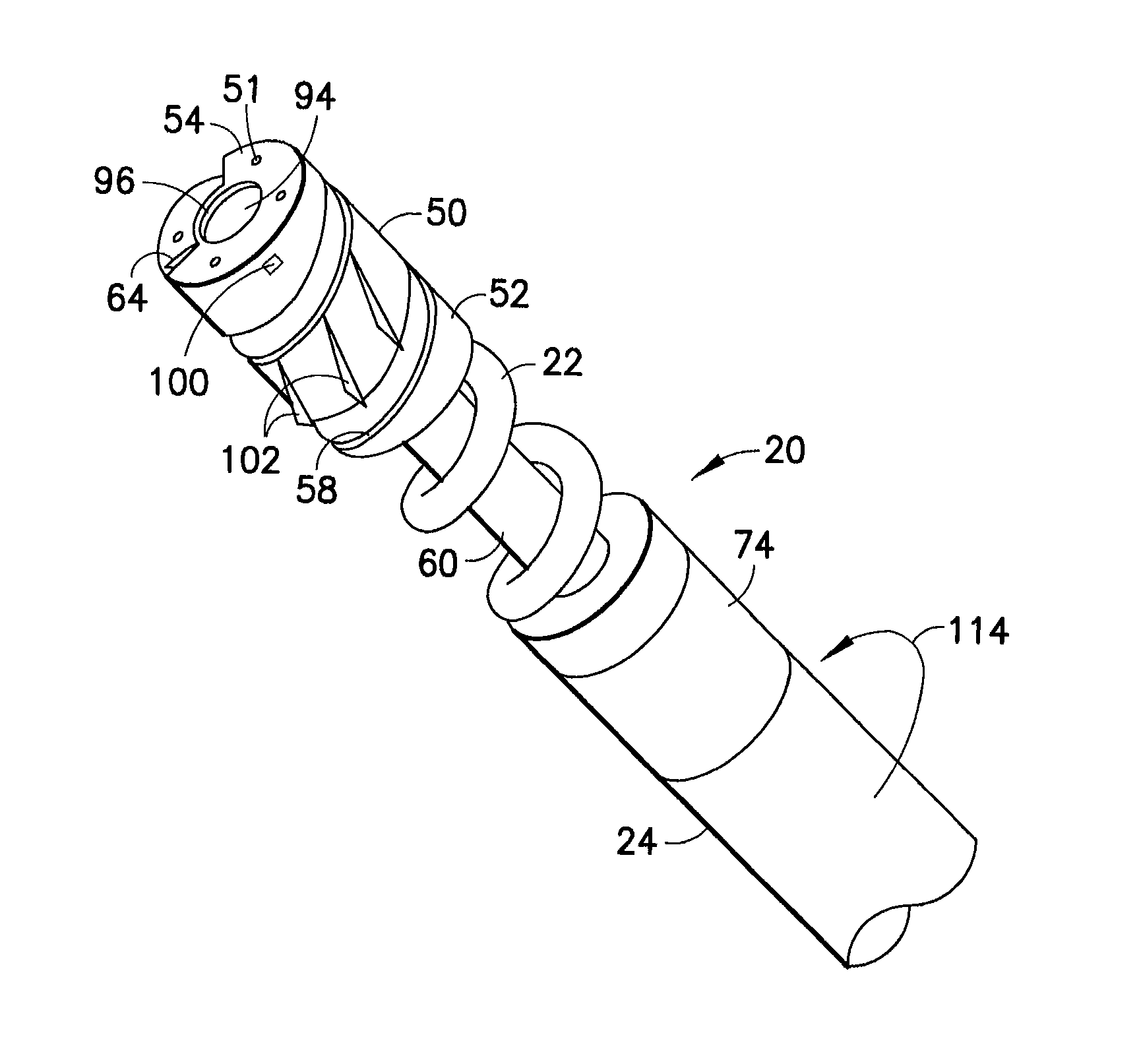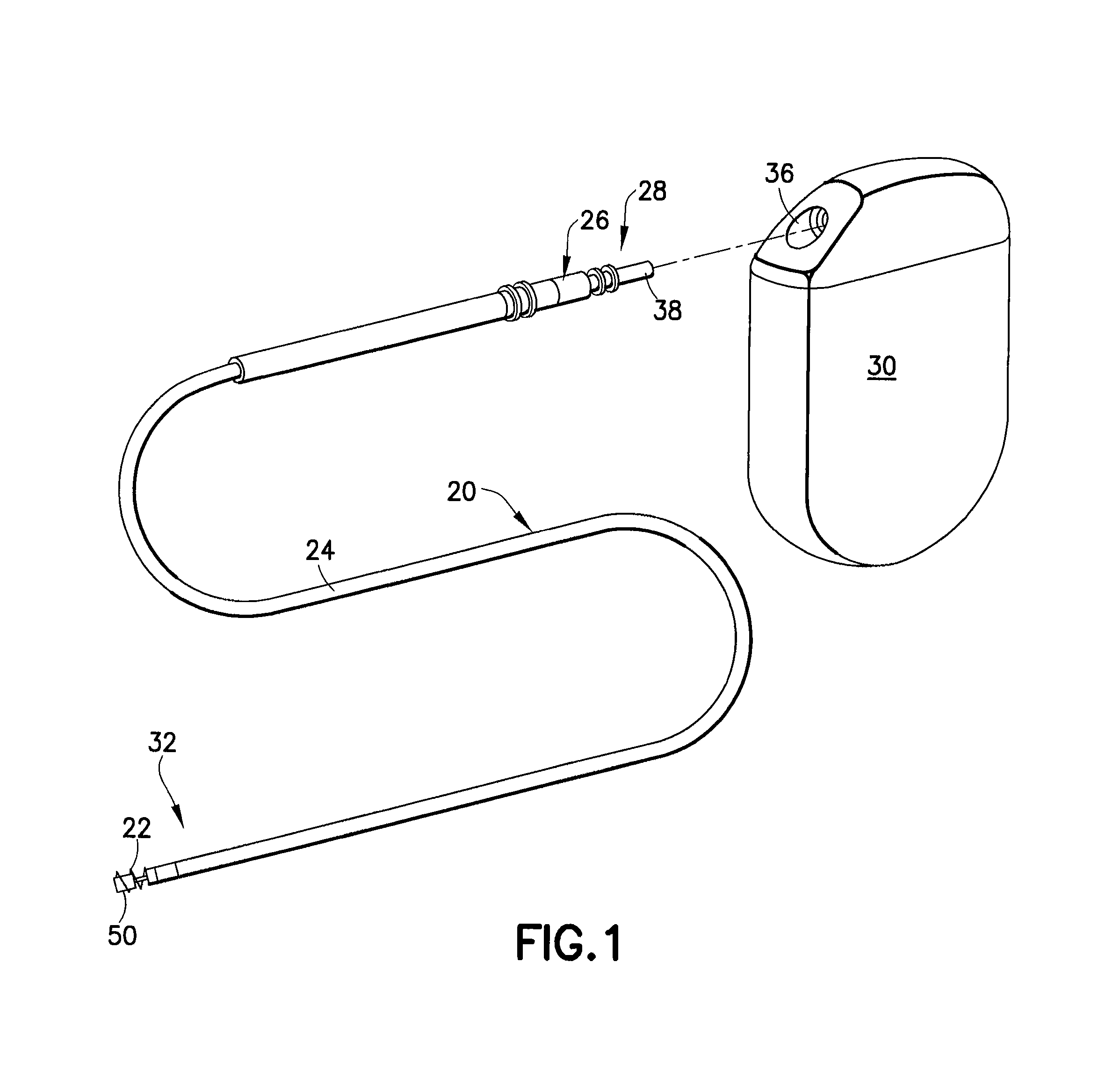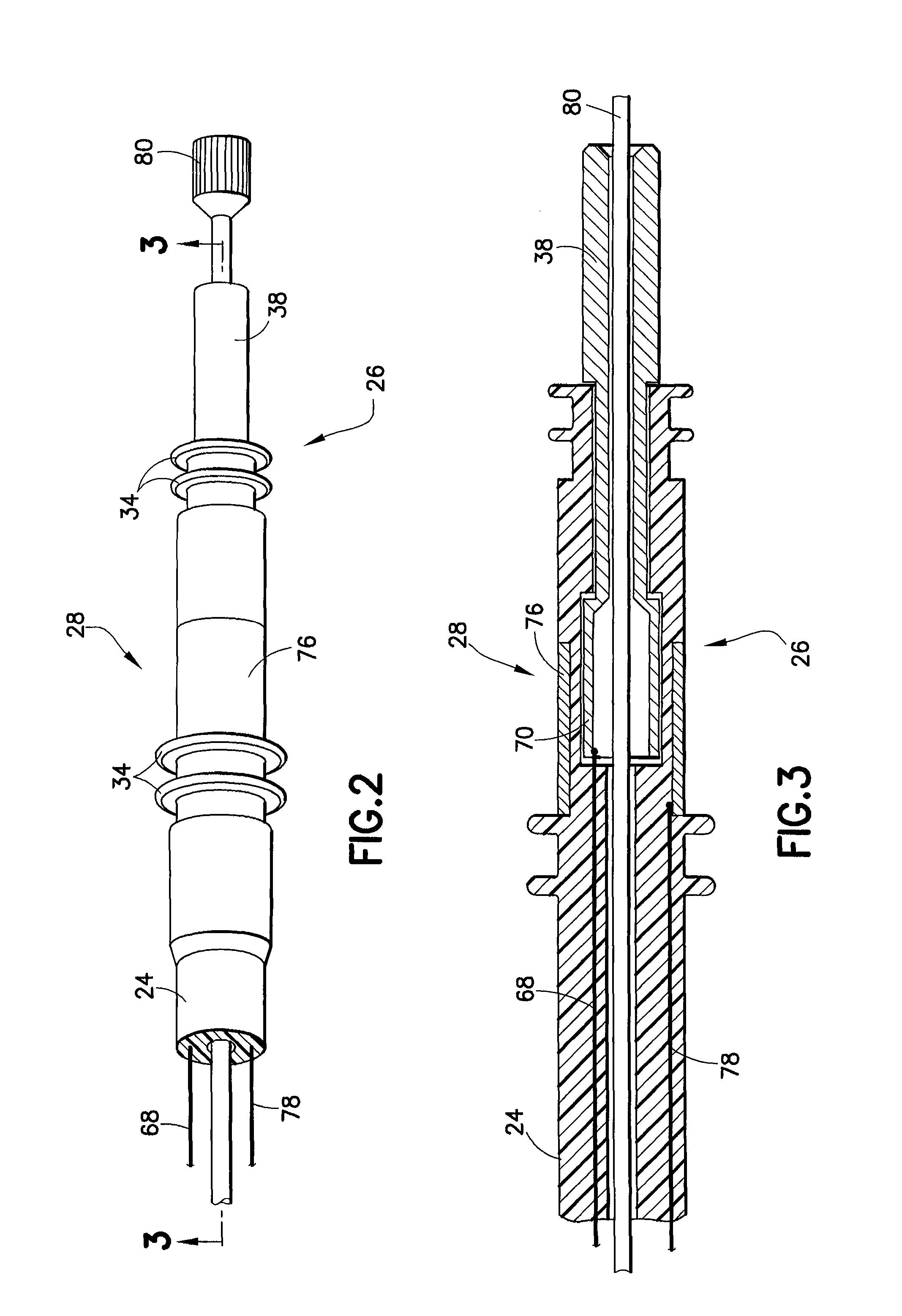Bipolar screw-in lead
a technology of bipolar active fixation and screw-in leads, which is applied in the direction of external electrodes, internal electrodes, therapy, etc., can solve the problems of high cost, high cost, and complex performance of screw-in leads, and achieves high friction, improve acute and chronic electrode stabilization, and save time in having
- Summary
- Abstract
- Description
- Claims
- Application Information
AI Technical Summary
Benefits of technology
Problems solved by technology
Method used
Image
Examples
Embodiment Construction
[0050]Referring to FIG. 1, there is shown a diagrammatic perspective view of an endocardial lead 20 incorporating features of the present invention. Although the present invention will be described with reference to the embodiments shown in the drawings, it should be understood that the present invention can be embodied in many alternate forms or embodiments. In addition, any suitable size, shape or type of elements or materials could be used. The lead 20 is attached to body tissue such as an interior wall of a heart by means of a fixation helix 22 at the distal end 32 for firmly engaging the tissue of the heart. Historically, the most successful fixation mechanism for pacing and ICD leads has been in the form of a screw-in fixation helix that can also serve as a helix electrode. This allows for the active fixation of a pacemaker lead in the myocardium, as well as for the acute removal if pacing and sensing parameters are not optimal.
[0051]Lead 20 further comprises a protector membe...
PUM
 Login to View More
Login to View More Abstract
Description
Claims
Application Information
 Login to View More
Login to View More - R&D
- Intellectual Property
- Life Sciences
- Materials
- Tech Scout
- Unparalleled Data Quality
- Higher Quality Content
- 60% Fewer Hallucinations
Browse by: Latest US Patents, China's latest patents, Technical Efficacy Thesaurus, Application Domain, Technology Topic, Popular Technical Reports.
© 2025 PatSnap. All rights reserved.Legal|Privacy policy|Modern Slavery Act Transparency Statement|Sitemap|About US| Contact US: help@patsnap.com



